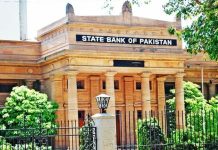ISLAMABAD: The Ministry of Finance has said that Pakistan is currently facing a low-saving and low-investment situation, which has constrained its economic potential, which can be mitigated through creating an environment conducive to investment to boost growth momentum.
According to an official document of the Ministry of Finance, a copy of which is available with WealthPK, the government is committed to ensuring the stability and confidence in the economy to attract investment.
Stable fiscal policy with a higher, growth-promoting path for the Public Sector Development Program (PSDP), based on physical and human capital development will be obligatory. Likewise, subsidies targeted to stimulate development of innovative industries and services will be essential.
Further, the investment must be capable of considerably augmenting the share of the total Gross Fixed Capital Formation (GFCF) in gross domestic product (GDP) as well as increasing the efficiency to create welfare.
The GFCF is defined as the net acquisition of fixed assets, used in the production process for more than one year. The ministry said the investors and consumers need to be convinced of a long-term sustainable and inclusive growth project that inspires confidence in Pakistan’s economic future and that induces them to take initiatives on their own, and in the country’s interest. Thus, a well-functioning competitive market is required.
Increase in consumer spending can increase international trade and businesses. This will in turn increase investment in capital spending which may positively impact the level of domestic production of goods and services which in turn result in economic growth.
In Pakistan, the investment-to-GDP ratio is stuck between 14 to 15%, thus placing it 133rd among 151 countries for the year 2021. Even in Bangladesh, the investment-to-GDP ratio is 30.5%. It is well-established fact that high growth in Pakistan is determined by the propensity-to-investment. However, after the mid-1980s, the propensity-to-investment fell dramatically.
One of the implications deduced is that the total GFCF is not driver of economic growth. Thus, Pakistan remained trapped in a low-saving and low-investment situation, which has constrained its economic potential.
It is also said that the economic conditions remained unable to attract investment both domestically and foreign direct investment (FDI).
According to the latest figures issued by the Ministry of Finance, in Jul-May 2021-22, the FDI reached $1.596 billion ($1.679 billion last year), a decrease of 4.9%. The FDI from China stood at $373.1 million (23.4% of total FDI), the United States $240.9 million (15.1%), Switzerland $132 million (8.3%) UAE $130.9 million (8.2%), and Singapore $104.9 million (6.6%).
A research study recently conducted by Pakistan Institute of Development Economics (PIDE) suggested that the policymakers should increase their focus on attracting FDI in manufacturing and services sectors in order to attain sustainable economic growth.
It added that in the manufacturing sector, the FDI inflow was relatively small; especially the textile sector has received meagre FDI inflows. Pakistan has received little export-oriented FDI and hence there is a limited role of FDI in export promotion.
The Finance Ministry highlighted that average of Incremental Capital Output Ratio of Pakistan became also much lower compared to countries in the region. Further, low savings rate limits the volume of investible funds. In turn, low investment makes growth unsustainable.
The ministry pointed out that in FY22, the high current account deficit resulted in low domestic and national savings. Thus, current savings and investment level is insufficient to boost growth momentum.
In FY22, the GFCF stood at Rs8.992 trillion against Rs7.217 trillion in FY21, thus, posting a growth of 24.6% as compared to 16% growth in FY21. During the same period, the GFCF in the private sector was estimated at Rs6.704 trillion against Rs5.557 trillion in FY21, showing a growth of 20.6%.
The GFCF in public sector remained at Rs481 billion during FY22 compared to Rs419 billion last year, registering a growth of 14.9%.
Likewise, the GFCF in the general government sector during FY22 stood at Rs1.808 trillion compared to Rs1.241 trillion during FY21, posting a growth of 45.6%.
Analysts have urged the government to take concrete steps for provision of maximum facilities to investors to increase the FDI.
Senior researcher and professor of economics at PIDE Dr. Abdul Jalil told WealthPK that in the prevailing economic situation, Pakistan is in dire need of maximum FDI to support its economy for sustainable growth.
“Pakistan’s domestic investment is stagnant at around 12 to 15% of the GDP) which is amongst the lowest in the world. Currently, Pakistan requires domestic investment of around 30% of the GDP to fulfil its needs. As for the FDI, it has always been fluctuating. Pakistan has never succeeded in attracting the required level of FDI. The current volume of FDI is very low, while Pakistan needs much more to enhance it,” he said.
He suggested that Pakistan must remove all the barriers and resolve issues to facilitate FDI.
-INP






